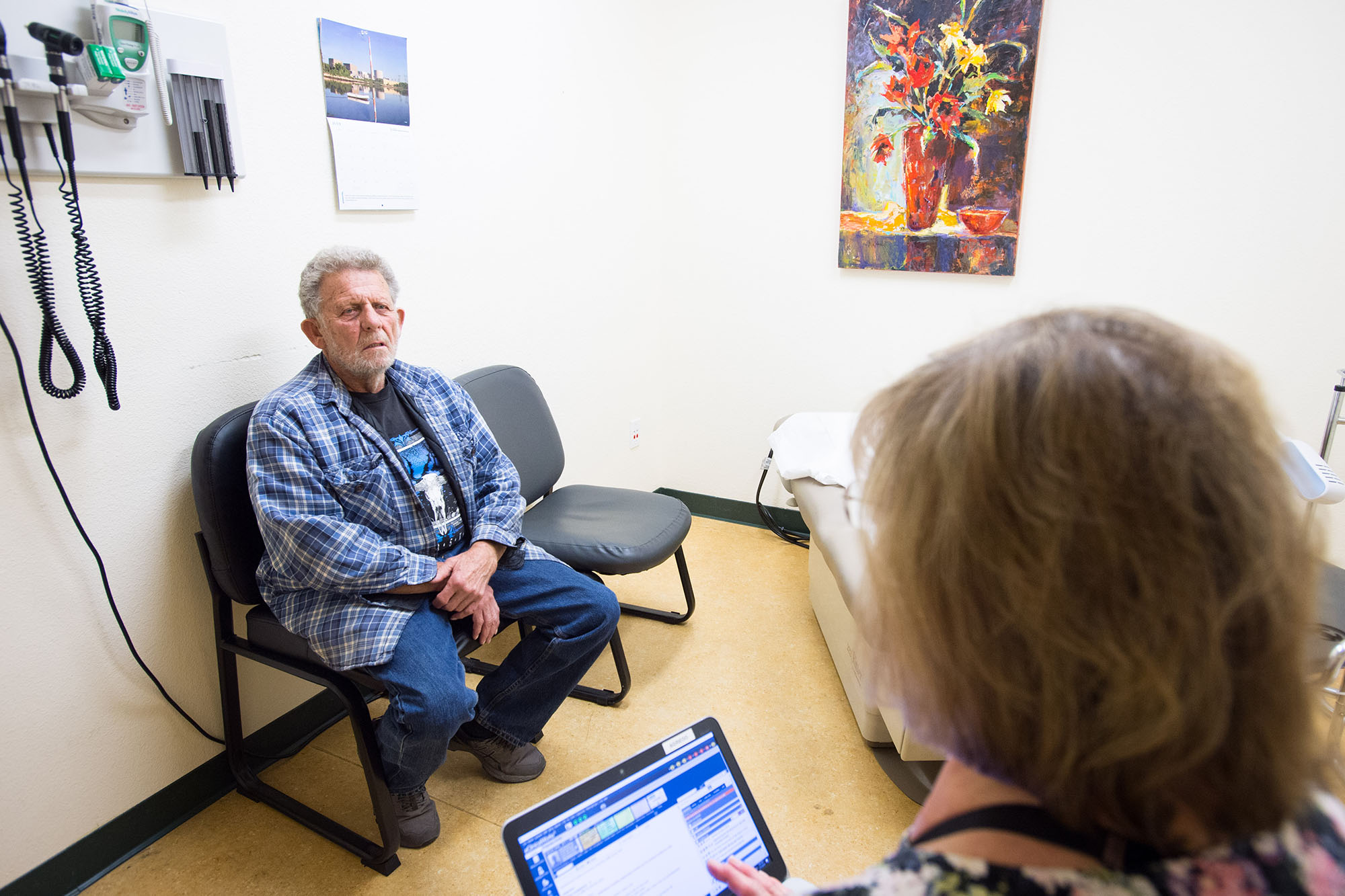
Three months before his 26th birthday, Alec Raeshawn Smith went to see his pharmacist. Alec, a type 1 diabetes patient, was about to age out of his mother’s health insurance plan. The pharmacist estimated the cost of his insulin and other supplies without insurance benefits would be $1,300 a month. Alec earned $35,000 a year as a restaurant manager — too much to qualify for Medicaid or for sufficient premium subsidies through his state’s health insurance exchange and, Alec concluded, too little to afford health insurance.

Alec died from diabetic ketoacidosis (DKA) on June 27, 2017, about one month after he turned 26 and three days before payday. DKA results when poisonous ketones build up in the bloodstream, and can lead to coma or even death if not treated with insulin and fluids. Bram Sable-Smith reports in Kaiser Health News that Alec’s family thinks he was rationing insulin to make it last until he could afford more.
Tragically, Alec’s life is not the only one that ended this way. WBUR reports that at least three people with diabetes died in 2017 from rationing insulin. Today, approximately six million Americans with diabetes depend on insulin — a drug developed for use in humans in 1922 — to stay healthy. And yet, insulin prices rose 270% in the last decade.
How Did Commonly Used Drugs Get So Expensive?
“This country’s shadowy and byzantine system for negotiating drug prices and rebate deals” is the cause of such illogical price movements, said Robin Feldman, a law professor at UC Hastings and director of the Institute for Innovation Law. In the Washington Post, Feldman explains that a maze of “odd and perverse incentives” allows more expensive drugs to receive more favorable reimbursement positions that reward doctors and hospitals for prescribing those drugs.
Additionally, strong patent protections help drug companies shut out competition. “The 1984 Drug Price Competition and Patent Term Restoration Act gave pharmaceutical companies exclusive protections for innovating a new drug,” writes Erin Fox, PharmD, BCPS, FASHP, an adjunct associate professor of pharmacotherapy at the University of Utah, in the Harvard Business Review. “If they brought a new therapy to life, they enjoyed patent protection to effectively monopolize the market.”
The federal law also attempts to encourage competition by allowing other companies to manufacture generic versions of a drug once its patent expires. But drugmakers have numerous tactics up their sleeves to thwart generic competition. They can introduce incremental changes to a drug to extend a patent. They can even hatch costly but legal “pay for delay” agreements with generic drug companies to block competition.
“In the short term, society pays more in the form of higher prices,” Feldman writes. “In the long term, society pays more in the form of fewer competitors to offer lower-priced drugs.”
The short-term cost is evident in the historical pricing of EpiPen, which injects the drug epinephrine to halt a life-threatening allergic reaction known as anaphylactic shock. EpiPen is a product of the American pharmaceutical company Mylan. According to an editorial in The Lancet Child & Adolescent Health, a pack of two EpiPens cost $100 when Mylan purchased the brand in 2007. By 2016, the cost of a pack had increased six-fold even though the manufacturing costs remained the same. Mylan responded to backlash over the high drug costs by introducing a generic version of the EpiPen for $300.
Then, in August 2018, the Food and Drug Administration (FDA) approved a generic version of the EpiPen from Teva Pharmaceutical. FDA Commissioner Scott Gottlieb, MD, said, “This approval means patients living with severe allergies who require constant access to life-saving epinephrine should have a lower-cost option.”
This week, Teva announced the cost of its generic epinephrine auto-injector: $300, the same as Mylan’s generic EpiPen. “File this under ‘When is a bargain not really a bargain?’” Ed Silverman wrote in STAT. The pricing is a clear example of the long-term cost society pays when there are few competitors in the drug market. When pressed on the not-quite-bargain cost of Teva’s generic drug, Gottlieb said, “We have found that having three or more generic competitors brings prices down more sharply than with only one or two generic competitors.”
Where Do We Go from Here?
The silver lining to the drug pricing problem — yes, there is one — is that Congress has bipartisan agreement to cut costs as soon as possible. Sarah Karlin-Smith reports for POLITICO that “Senator Bernie Sanders and Donald Trump are on the same page on drug pricing once again.”
Sanders, an independent from Vermont who caucuses with the Democrats, and Representative Ro Khanna (D-California) introduced bills in their respective chambers to lower drug costs by relying on price controls set by other countries. Karlin-Smith explains that if US pharmaceutical companies don’t charge prices comparable to those paid in countries like Canada and the United Kingdom, “the federal government could intervene to allow generic companies to produce cheaper knockoffs.”
The Sanders-Khanna plan complements a recent proposal from the Trump administration. Vox’s Dylan Scott writes, “The administration wants Medicare Part B, which covers hospital and cancer drugs, to start paying a price based on an average of what certain European countries pay for specific medications.” Though similar to the Sanders-Khanna plan, the administration proposal only addresses drug costs in Medicare, not the private market.
The Trump administration has also released a proposal for changes to Medicare Advantage and Medicare Part D. Max Nisen opines in a column for Bloomberg that the proposed rules “would make it easier for drug plans to require that patients obtain prior approval for treatments in [the six protected classes of drugs in Part D] before they are dispensed, and that patients try lower-cost options before moving on to more expensive drugs.” The protected classes include cancer drugs, antidepressants, and antipsychotics.
Though policymakers appear to be reaching across the aisle to curb drug costs, they will also have to reach out to seniors whose access to necessary drugs may be affected by their actions. Nisen warns, “The past history of this kind of effort is fraught. The Obama administration attempted to end the protected status for two of the six classes but saw its effect flounder under withering criticism from industry and patient groups.”
Additionally, 55 conservative groups and activists submitted a letter opposing the Part B proposal to Health and Human Services Secretary Alex Azar. They argue that importing price controls “will inevitably suppress innovation and harm American competitiveness.”
Another Tool: Comparative Effectiveness
Comparative effectiveness research could also help reduce drug costs. “Efforts to constrain prices by aligning them with clinical value would not stifle innovation,” write Steven Pearson, MD, (founder and president of the Institute for Clinical and Economic Review), Len Nichols, PhD (professor of health policy and director of the Center for Health Policy Research and Ethics at George Mason University), and Amitabh Chandra, PhD (professor of social policy and director of health policy research at the Harvard Kennedy School of Government). In Health Affairs, they argue that “measures to enhance competitive market forces and to leverage comparative effectiveness to achieve value-based pricing would provide more explicit incentives for the kind of innovation that should be rewarded handsomely within the US health care system.”
California is implementing mandatory drug price transparency measures. In 2017, Governor Jerry Brown signed into law SB 17, which requires drug companies planning significant price increases to give 60 days’ notice to health insurers and the state. Starting next year, the state’s Office of Statewide Health Planning and Development will begin collecting information related to new drugs and significant price increases of existing drugs. That information will be published four times a year on its website.
Have you run into problems with drug costs in your personal or professional life? Tell me about them email me.
Authors & Contributors





